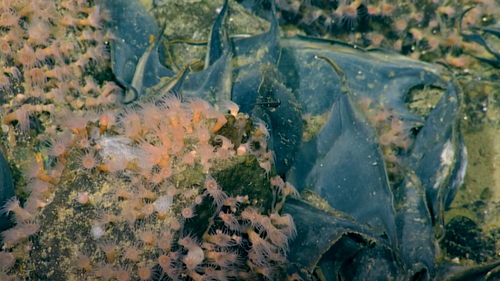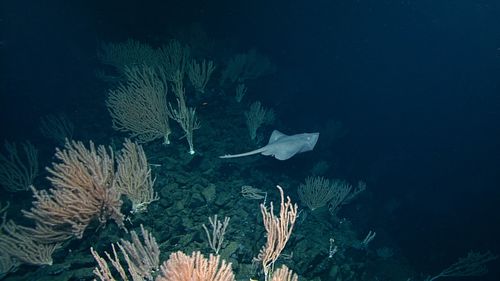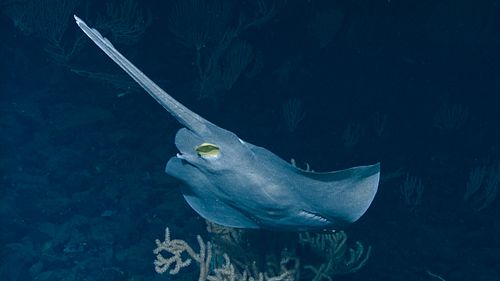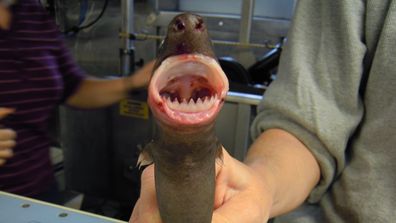Then they noticed the conical, giant eggs covering the slopes of the volatile peak, which soars to a height of 1100 metres and is located nearly 1.5-kilometres beneath the surface of the Pacific Ocean.
The volcano has been dubbed NEPDEP 58, and is one of more than 45 new seamounts mapped by the expedition.

She explained the eggs belong to the Pacific white skate, Bathyraja spinosissima.
“I was in disbelief when I realised the seamount top was covered in hundreds of thousands of skate eggs, maybe a million,” Du Preez told 9news.com.au.
Prior to the find, the only other known Pacific white skate nursery was in the Galapagos and only a couple dozen eggs were observed there.
“But really, at that point, we had just scratched the surface of what was to come.”

Du Preez and the team then witnessed a “one-of-a-kind encounter”.
“And just like that (we saw), a large female skate ‘swoop’ to the seafloor.
“I had speculated what it’d look like when they laid, and the swoop was exactly as I’d imagined.
“We documented it all. She flew down to the seafloor and used the corals to bush up against and pull the egg. At this point, you couldn’t ask for more.
Read Related Also: California's Death Valley sizzles as brutal heat wave continues
“The behaviour was beautiful. The encounter was one-of-a-kind”.


“We deployed the submersible thermometer, and that’s when we discovered the volcano was venting hydrothermal fluid, which is a rare discovery in the world and a first in Canada,” she said.
“That was it – the draw for the skates.
“Warmth is thought to accelerate incubation times and result in more successful young hatching.
“Here, in this amazing nursery ground, they are sheltered from predators by the corals and warmed by the volcano itself,
“We believe that the eggs are safe here, the juveniles grow to be strong, and the young have a better chance at survival, to grow larger, descend into the deep, and wander the open ocean.”

The world’s most bizarre deep sea sharks
The fruitful expedition wrapped in June and had been exploring the deep sea since 2017.
“This is so important considering the current question of deep-sea mining of seamounts for their cobalt crust.”
The team are yet to publish their findings.






